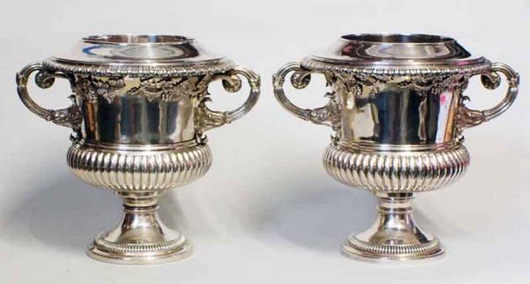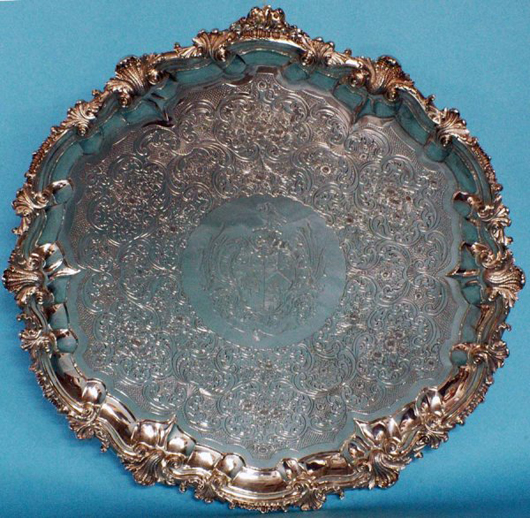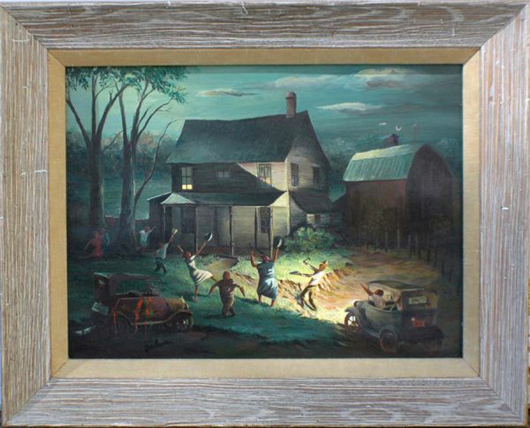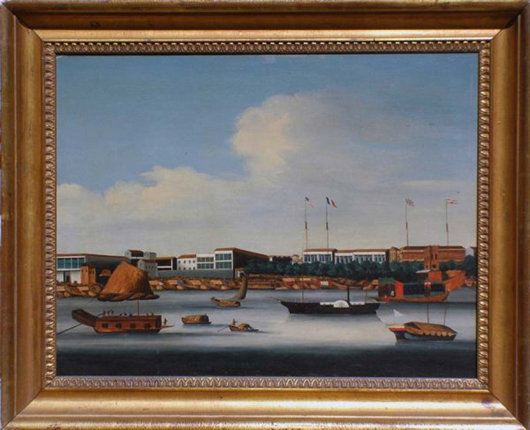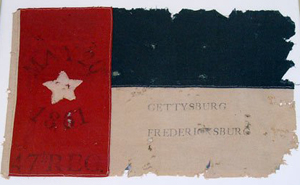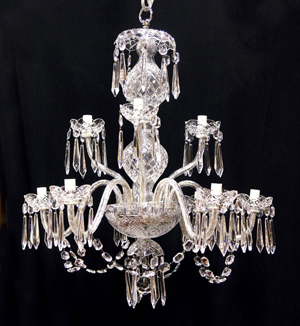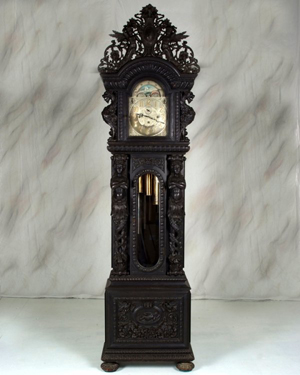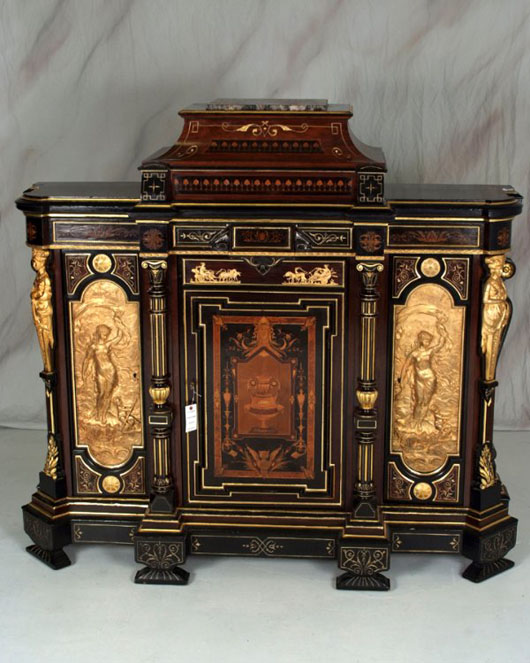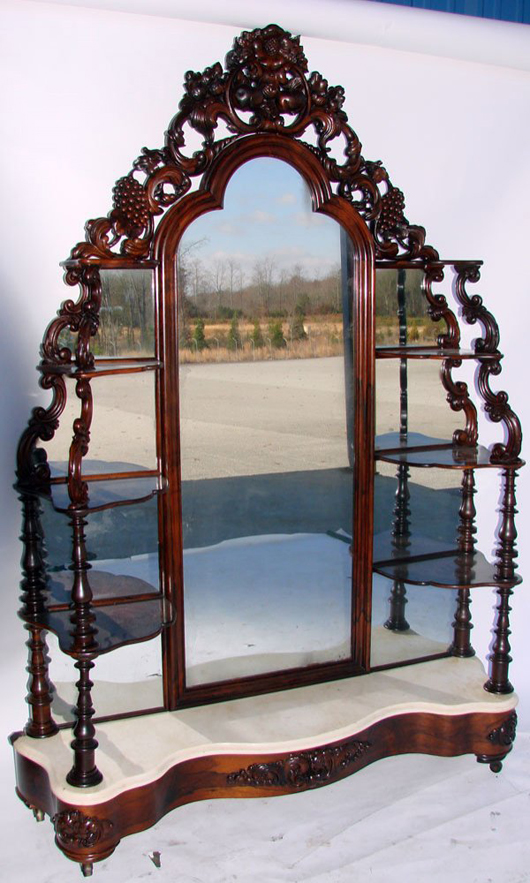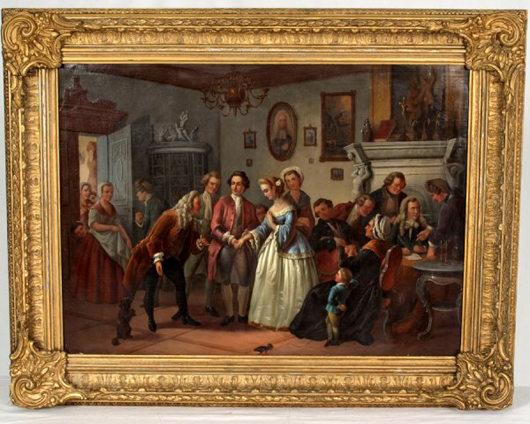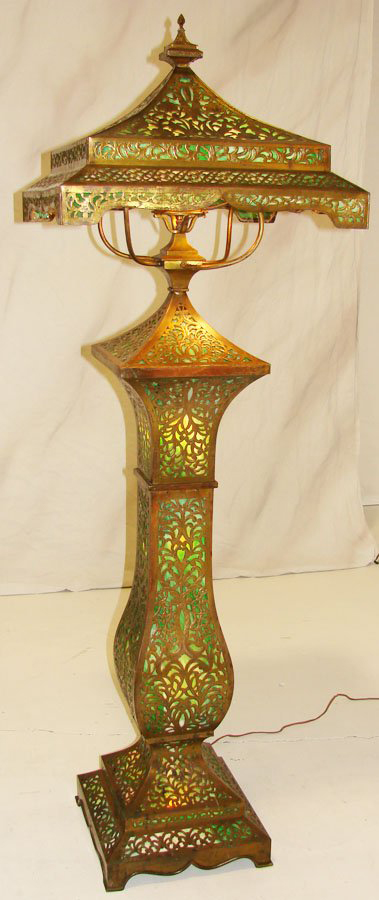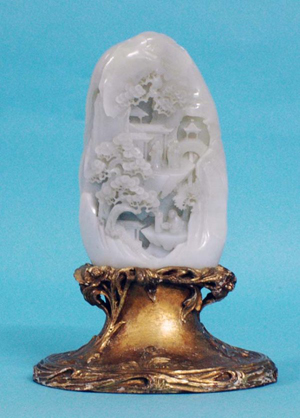
WEST PALM BEACH, Fla. – The estates of Palm Beach County and South Florida are the bread and butter of Auction Gallery of the Palm Beaches, but the company’s Jan. 11 sale consists of an especially delectable spread. LiveAuctioneers will provide Internet live bidding for the sale, which begins at 6 p.m. Eastern.
“We have great variety for this auction – jade, sterling silver and fine art,” said Brian Kogan of Auction Gallery of the Palm Beaches. “One of the estates is from Boca West, an affluent community near Boca Raton.”
“This sale should be a good prelude to the antique shows opening next week,” added Kogan.
Topping the jade items is large white mountain, which is deeply carved on two sides with figures on ledges and pavilions in the background, along with pine trees protruding among the rocks and a bridge across a river. The 9-inch-high stone is raised on a carved giltwood base made by Edward I. Farmer. A New York City art dealer in the 1920s, Farmer specialized in Chinese works and was known for mounting jades into his decorative accessories, rendering each piece unique. The white jade mountain on its stand is 13 1/4 inches high and has a $14,000-$18,000 estimate.
An important piece in the sale is a William IV sterling silver salver by Paul Storr, London, 1834. The circular tray, 20 1/4 inches in diameter, is raised on pierced foliate feet. It is stamped “Storr & Mortimer 213.” The central decoration consists of a coat-of-arms surrounded by engraved scrolls and flowers. Weighing 110 troy ounces, the salver is expected to bring $15,000-$20,000.
An excellent pair of George IV sterling silver wine coolers complete with liners and collars has the maker’s mark of F.W. & D., Sheffield, 1827. The coolers stand 10 inches high and have a $20,000-$25,000 estimate.
With a following from New York and Palm Beach, the Orville Bulman (American, 1904-1978) painting titled Charivari is expected to fetch $20,000-$30,000. The 18- by 24-inch oil on canvas depicts moonlit revelers outside the farmhouse of newlywed couple.
“It’s one of his magical scenes,” said Kogan, of the self-taught artist born in Grand Rapids, Mich.
Another outstanding painting in the sale is an 18th- or 19th-century Chinese School View of Canton harbor. The oil on canvas measures 17 3/4 by 23 1/2 inches and has a $10,000-$15,000 estimate.
Also worth noting is a large collection of glass toasting goblets and roemers, many decorated in jeweled enamel. Several other goblets are gilt-decorated topographicals in ruby glass. Another is Favrile glass by Tiffany.
English and European porcelains will also be sold at the auction including a large KPM plaque of Mary Magdalene after Battoni, which is estimated at $4,000-$5,000.
For details phone 561-805-7115.
To view the fully illustrated catalog and sign up to bid absentee or live via the Internet during the sale at www.LiveAuctioneers.com.
Click here to view Auction Gallery of the Palm Beaches Inc.’s complete catalog.
ADDITIONAL LOTS OF NOTE
